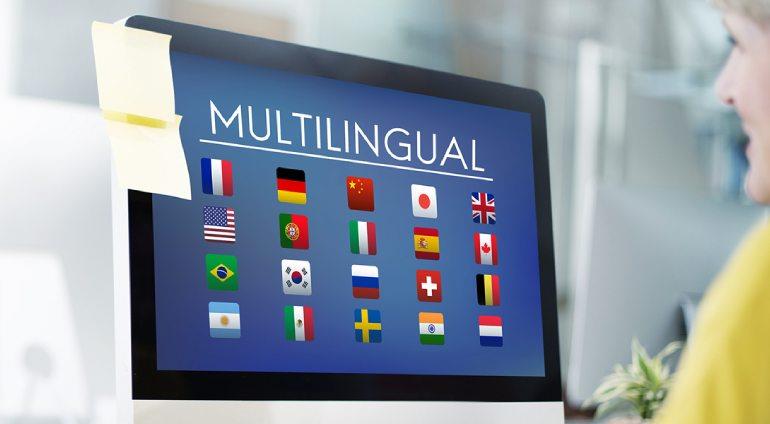Website translation is one of the most crucial steps for brands, businesses, and individuals to establish a presence in the global market. Translating a website accurately, fluently, and with cultural adaptation enhances brand credibility and makes it easier to reach an international audience. Based in Ümraniye, Tercümentral offers professional website translation services, helping you gain a strong presence in the global digital space.
Website translation is not just about translating words directly. It requires delivering content that is culturally appropriate, easy to read, and optimized without any loss of meaning. Tercümentral ensures that your website translation is not only linguistically accurate but also effective in terms of SEO (Search Engine Optimization). This helps your website rank higher in search engines across different countries, attracting more visitors.
Our services include corporate website translation, e-commerce site translation, blog and content translation, mobile application translation, and multilingual SEO-friendly text translation. We focus on linguistic accuracy as well as industry-specific terminology and user-friendly content.
If you want to make your website more visible in the international market and receive professional website translation services, you can contact Tercümentral today.
What is Website Translation and What Are Its Types?
Website translation is the process of taking the content to be published on your website in its original language and transferring it to another language and culture. Website translations are usually done word-for-word to increase accessibility to global customers.The translatable content of your website ranges from static on-site text to multimedia content such as images, videos, and PDFs. Also,
- “Invisible” metadata text (viewed only by search engines and social media platforms)
- Dynamically loaded content from applications
- User experience notifications such as error messages and confirmation emails
There are different levels of translation, including traditional translation, localization, character translation, and image processing. Each approach is unique and ideal for different translation needs.
Is Website Localization the Same as Website Translation?
No. Website localization goes beyond linguistic word-for-word translation of traditional translation to create an online experience that resonates in specific markets. There are 5 key elements of website localization. In addition to website translation, Tercümentral also offers localization services.- Language and regionalism: Word choice is customized to convey the brand voice accurately to local customers. This includes expressions that may only be used in certain countries or regions.
- Cultural elements: Understanding local date and time formats, measurement units, holidays, and values helps users feel at home.
- Transactional elements: Items like currency, payment options, addresses, and character sets should be relevant to local customers for accuracy and trust.
- Communication and trust factors: Local phone numbers, local addresses, customer support lines in their language, legal notices, and security banners are key to gaining trust from local customers. It also helps equip in-market sales and marketing teams with the information needed to serve your customers.
- Navigation and discovery: It’s crucial that users can choose their language and interact with your site instantly and authentically.
What Are the Various Methods Used for Translating Different Websites?
Method 1: Copy-Paste Based Translation
Copy and Paste is one of the simplest methods of website translation as it does not require any additional technology behind your website and is quite easy to use. Using this technique, the webmaster copies each sentence or phrase into a Google Sheet. Then the Google Sheet is shared with the translator who adds the necessary translations. The new text is then copied and pasted into your website’s newly localized pages.Method 2: Plugin-Based Translation
Plugin-based translation is mostly used by CMS or e-commerce applications such as Shopify, BigCommerce, WordPress, Drupal, WIX, etc. The beauty of plugin-based translation is that it allows access to your website, and your translation provider or TRAVOD can translate the text directly on your site. All updates are performed seamlessly in real time.Method 3: Dynamic Content-Based Translation
Dynamic content translation takes things a step further by allowing translators to use a visual editor on the website instead of creating and uploading files manually. This method provides higher-quality local content. The translated syntax and context will approach 100% accuracy according to the intent of the original language. Dynamic content translation is only offered by a few translation companies.Method 4: Text Extraction-Based Translation
Text extraction is another translation method used when the page is not structured, with numerous subpages or sub-elements, different content workflows, and content animations. Using special “scraping tools,” text is automatically extracted from the website and sent to the translator for conversion. Using automation ensures that no text is missed during extraction.Method 5: File Extraction-Based Translation
The file extraction method is commonly used by translation agencies to make your work easier. By providing FTP access to your website database, the translation company exports the raw files and database content itself. Then the text is translated and pushed back to your site using FTP. Although it’s a common method, it can be problematic for dynamic webpages or companies with particularly complex websites.For detailed information, you can contact us at tercume@tercumentral.com or call us at 0542 276 76 67.

